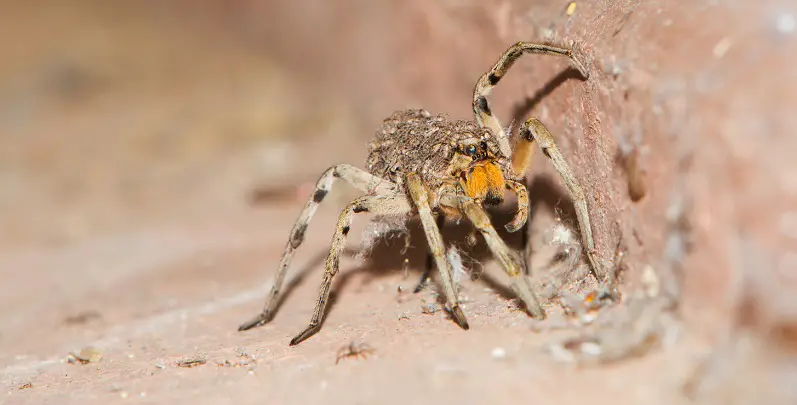Spiders That Eat Roaches

Cockroaches are often deemed the most resilient and bothersome pests in homes worldwide. While many homeowners resort to chemical treatments to keep these pests at bay, nature has its way of managing these critters – spiders. But not all spiders feed on cockroaches. Let’s delve into which spiders do the trick and how they can be beneficial.
Spiders that Eat Cockroaches
| Spider Type | Hunting Method | Active Time | Regions Found |
|---|---|---|---|
| Huntsman Spider | Active Hunter | Night | America, Asia, Australia, Africa |
| House Spider | Web & Active Hunting | Variable | Worldwide |
| Wolf Spider | Active Hunter | Night | Worldwide |
| Jumping Spider | Active Hunter | Day & Night | Worldwide |
| Orb Weaver | Web Hunting | Day | Worldwide |
| Black Widow | Active Hunter | Variable | Americas, Australia |
| Brown Recluse | Active Hunter | Variable | Americas |
Spiders that Feast on Cockroaches
- Huntsman Spiders: Found in regions like America, Australia, Asia, and Africa, these spiders have a notorious reputation for their cockroach hunting skills. Unlike many spider species, Huntsman spiders don’t build webs to trap their prey. Instead, they actively hunt, injecting venom into their prey, which can cause clotting, paralysis, and tissue breakdown.
- House Spiders: These spiders comprise different species like the domestic spiders, hobo spiders, cellar spiders, and the American House Spider. While some actively hunt, others lay webs to trap their prey, including insects like cockroaches, earwigs, mosquitoes, flies, and moths.
- Wolf Spiders: These are solitary hunters often found in home premises, such as garages and sheds. Given their size and hunting prowess, they can even take on toads, making cockroaches an easy target.
- Jumping Spiders: Active and efficient hunters, jumping spiders are so adept at their skills that some pet owners feed them small cockroaches.
- Orb Weavers: These spiders are remarkable not just for their size but also for their hunting prowess. With strong, noticeable webs, they can trap anything, including small birds and cockroaches.
- Black Widow and Brown Recluse: While both these spiders are known for their dangerous bites, they’re also adept hunters, with cockroaches being part of their menu.
However, it’s worth noting that some spiders, like the Yellow Sac Spiders, tiny house spiders, and daddy longlegs have mouths too small or might be too timid to go after cockroaches.

Benefits of Spiders in Pest Control
Spiders play an invaluable role in controlling pests like cockroaches. Given that cockroaches can transmit diseases like E. coli and Salmonella and host several parasitic worms, their unchecked presence can lead to health concerns. By preying on these pests, spiders can help naturally reduce their numbers, making them an eco-friendly pest control solution.
The Implication
While spiders can assist in cockroach control, it’s not a comprehensive solution. Introducing a large number of spiders in an attempt to control cockroach populations might lead to an infestation of spiders, which comes with its own set of problems.
Do Spiders Eat German Cockroaches?
Yes, spiders, especially larger varieties, are known to eat German cockroaches. Being one of the most common household cockroaches, German cockroaches can become prey to hunting spiders when they cross paths.
Do House Spiders Eat Cockroaches?
House spiders, depending on their size and species, can and do eat cockroaches. Larger house spiders, like the domestic spider or hobo spider, are known to prey on cockroaches, while smaller species might target only juvenile cockroaches.
Do Spiders Eat Cockroach Eggs?
While spiders primarily target live insects, they might consume cockroach eggs if encountered, especially if the egg case is ruptured. However, spiders are more likely to target living cockroaches than their eggs.
Conclusion
Nature has its own checks and balances. While cockroaches are pests that can wreak havoc in our homes, spiders rescue them by preying on them. However, relying solely on spiders for cockroach control might not be the most effective method. It’s essential to maintain a balanced approach to pest control.

James E. Butkovich, Pest control maven with a knack for eco-friendly & Chemical solutions. Blogger with a mission to make homes pest-free, one post at a time.